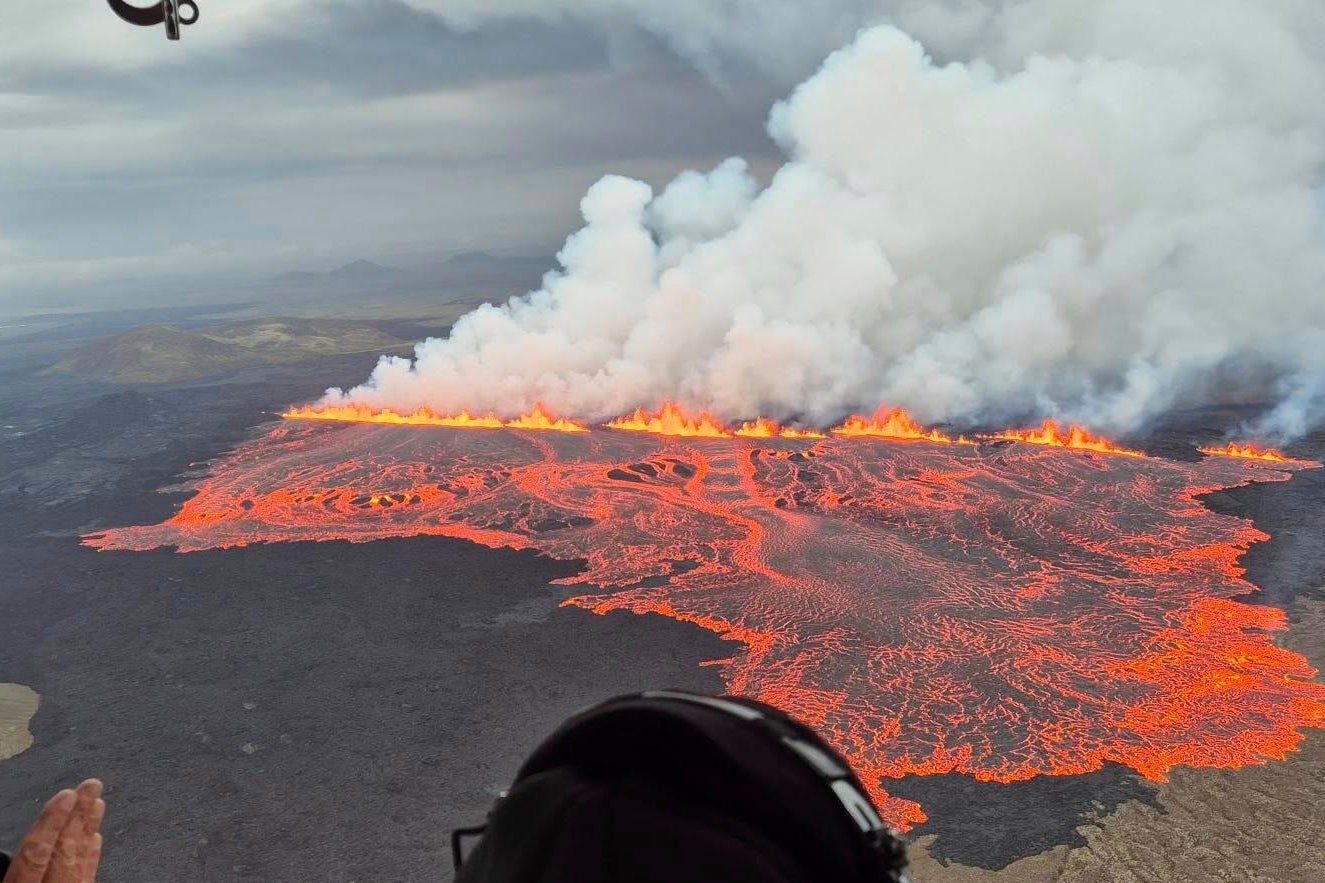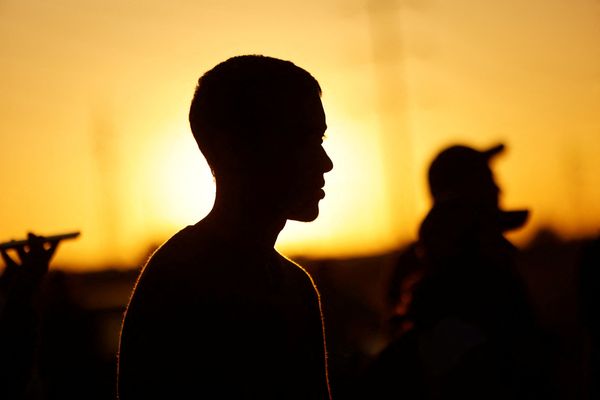A volcanic fissure that opened up in Iceland’s Reykjanes Peninsula expanded on Thursday after an eruption forced the evacuation of local residents and travellers staying at the famous Blue Lagoon spa.
Lava was still flowing on Thursday, after what officials say was the twelfth eruption in the region since 2021.
The volcano alert level will remain at the highest level until 3pm on Friday, Iceland’s Meteorological Office (IMO) said in their latest assessment.
The eruption on Wednesday prompted fresh evacuations from the nearby town of Grindavík, a luxury hotel, and the popular Blue Lagoon spa, Icelandic authorities said.
Jördís Guðmundsdóttir, communications director for civil protection, says that police were driving around the Blue Lagoon checking on people staying in houses.
“There are quite a few people there,” she said, according to The Mirror, adding that she didn't have an exact number of people staying in the area.
On Wednesday, the eruption sent glowing lava and columns of smoke into the air, with dramatic footage showing orange flows lighting up the dark volcanic landscape.
The outbreaks, known as fissure eruptions, are characterised by lava flows emerging from long cracks in the earth's crust, rather than from a central crater.
The crack in the ground now measures some 2.4 kilometres, with fresh lava now covering 3.2 square kilometres, according to officials.
“(It does) not threaten any infrastructure at this time,” the IMO said in a statement. “Based on GPS measurements and deformation signals, it is likely that this was a relatively small eruption.”

Authorities moved swiftly to evacuate areas near the site. According to Iceland’s public broadcaster RUV, guests were relocated from the Blue Lagoon resort and residents were cleared from Grindavík.
Clouds of gas were heading towards nearby communities in Vogar and Reykjanesbær, Sandgerði and Garð, local media reported. Residents were asked to close windows and monitor the air quality.
The town, once home to nearly 4,000 people, was evacuated in 2023 and has remained largely deserted ever since, due to repeated volcanic activity and earthquake threats.
A large sulphur dioxide gas cloud was blowing toward Keflavík International Airport. Flights at Keflavík airport, about 20km away, were not affected as of Thursday evening, and no major disruption to air traffic was reported.
The eruption is the latest in a growing sequence of volcanic events on the Reykjanes Peninsula, which began when dormant systems were reactivated in 2021 after centuries of silence. Experts warn the region could now face periodic eruptions for decades or even centuries.
“This is part of a new volcanic cycle,” the IMO has previously said, referring to the Reykjanes system, where magma often emerges through long surface fissures rather than traditional crater eruptions.
While past eruptions in the region have not ejected large volumes of ash into the stratosphere, the frequent lava flows and associated tremors continue to pose risks to infrastructure, geothermal plants, and communities in southwest Iceland.
Iceland volcano eruption live: Huge wall of fire expands to the north
Alaska rocked by 7.3-magnitude earthquake: Tsunami warnings canceled
Earthquake swarm strikes Mt Rainier in Washington state
Ukraine war live: Zelensky and Trump consider drone ‘mega-deal’
Watch live: UK and Germany sign treaty on migrant smuggling crackdown
French town withdraws music festival funding after Kneecap booking announced







